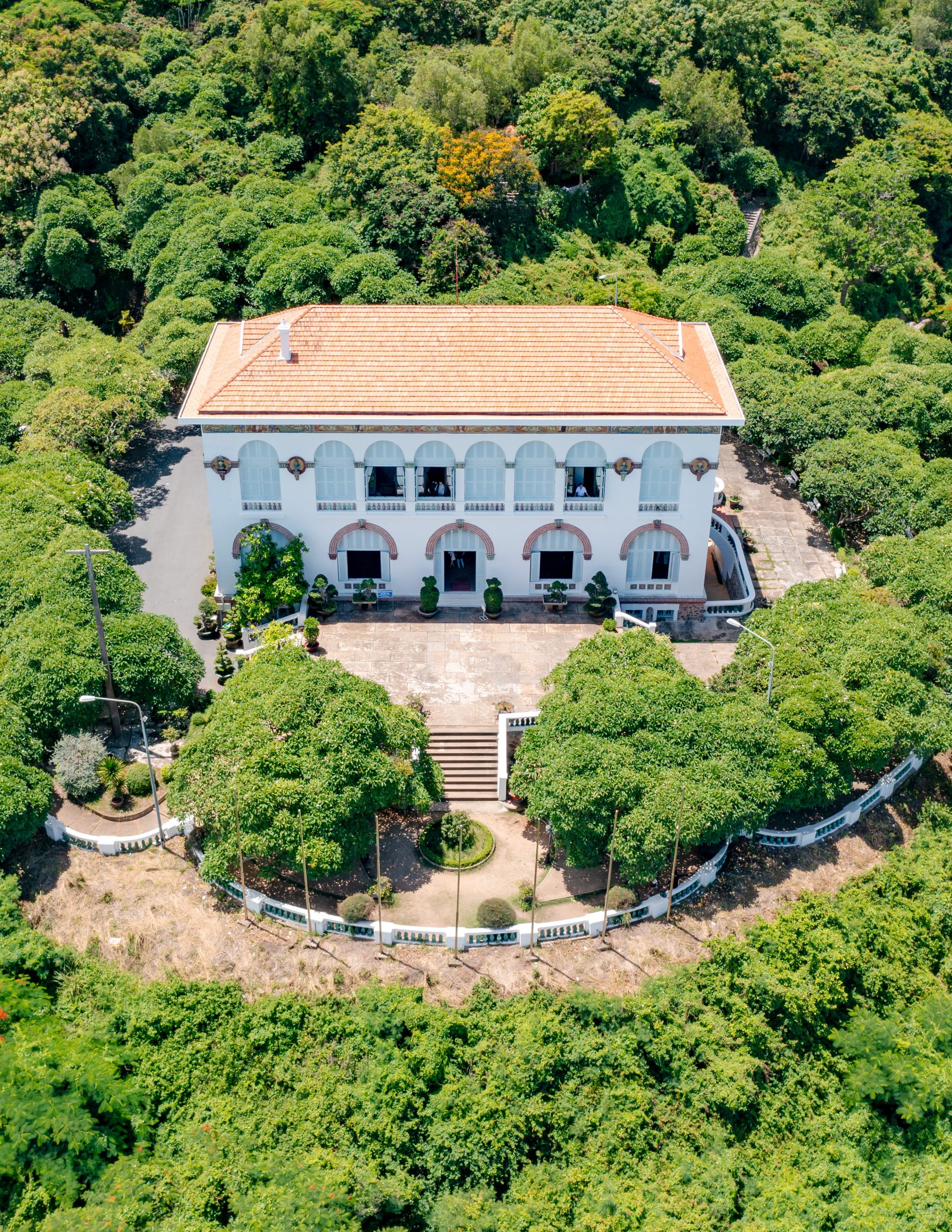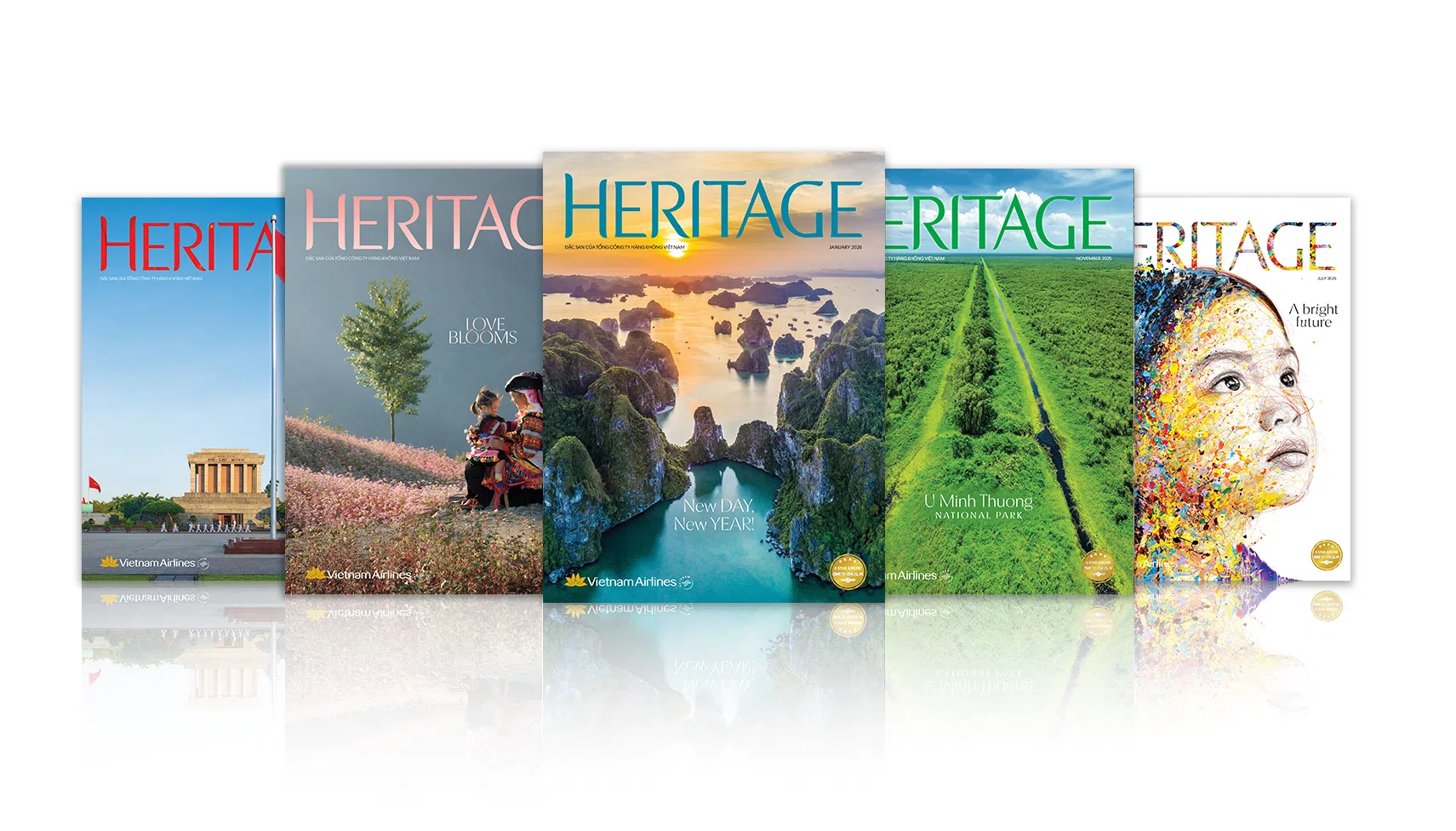Story: Truong Quy
Photos: Thai Viet Hoan
Bach Dinh, or the “White Palace” is a charming spot to visit in the seaside town of Vung Tau

As its name suggests, Bach Dinh (The White Palace), is painted white, a color that stands out against the greens and blues of its surroundings in Vung Tau: the deep green of the trees on Nui Lon (Big Mountain), the sapphire of Bai Truoc (Front Beach), and the clear blue of the year-round sunny sky. When construction began in 1898, Bach Dinh was named after the daughter of Governor-General Paul Doumer – Blanche Doumer, whose given name means “White” in French. Overlooking the East Sea, the three-story tile-roofed mansion on the slopes of Nui Lon is a poetic landmark, with architecture reminiscent of buildings in the Mediterranean regions of Southern France and Italy. Since its inauguration in 1902, it served as the residence or vacation home of many French governors-general, princes, and politicians of the past.
Discreet elegance and pride
Before discussing its historical significance, Bach Dinh stands as a beautiful structure on its own, situated in a quieter, less densely built-up area of Bai Truoc (Front Beach), compared to Bai Sau (Back Beach). Bach Dinh provides a tranquil space that fully exudes an air of solemn dignity. It serves as a perfect example of Neoclassical rationalist architecture with Renaissance influences. The main rectangular building is located on a crescent-shaped hill, complete with jade-colored ceramic balustrades. From a distance, Bach Dinh does not flaunt its exterior. Instead, visitors must navigate through a winding slope amidst rows of teak trees and kapok trees, then pass by groves of white plumeria whose colors change with the seasons, all serving to accentuate the grand residence. Bach Dinh’s facade faces the sea, simultaneously embracing the natural beauty of the landscape and keeping a discreet distance from the bustling city streets.
The arched windows and doors with louvred shutters, painted in a heavenly shade of pale blue, are a poetic and signature characteristic of the building. The arrangement of five arched doors on the spacious ground floor, bordered by red tiles, contrasts with the upper floor’s configuration, which includes a cluster of six small arched windows in the center and two on either edge. This diminishing structure is a common architectural technique found in Mediterranean mansions, particularly in Southern France and Italy. The most remarkable detail on the facade is a mosaic frieze below the roof, along with eight semi-nude statues of goddesses in green ceramic, positioned in purple circular frames facing the sea and on both gables of the building. These elements add artistic highlights to the construction, imbuing it with an air of luxurious elegance. The ornate frieze features Western female faces mythologized within circular frames, interspersed with undulating lines resembling vines and peacock figures, typical of the Art Nouveau style. This style, which emphasizes inspiration from nature, is common in luxurious European buildings of the same era.

When Classic intertwines with Modern
The layout of Bach Dinh is quite simple and coherent, consisting of three floors. The basement is for logistics and kitchen services; the ground floor is for ceremonial activities and antique displays; the upper floor is devoted to bedrooms and living areas for the owner and esteemed guests. The rooms are distributed symmetrically on both sides of the stairs, closely resembling the Art Deco style, particularly the wrought-iron railings with wave patterns. Simultaneously, some door frames separating the rooms feature octagonal or hexagonal edges, likely refurbished in the 1930s. This reveals that Bach Dinh has undergone numerous renovations, but fundamentally retains an elegant and condensed spirit in its architectural decorations.
While the architecture of the building has a strong European influence, the furniture and many antiques showcase a blend of Eastern and Western elements. These include royal signature items such as the Song Binh Bach Dieu Chau Phung (a large ancient flower vase with an image of hundreds of birds combined into a phoenix); a royal sofa carved from wood in 1921, during the reign of Khai Dinh; a pair of 158cm-long African ivory tusks; and a set of Tam Da Ngu Thai (a triad of statues representing the five blessings of Fortune, Prosperity, and Longevity). Meanwhile, the wooden furniture in King Bao Dai’s and Queen Nam Phuong’s private rooms exemplifies a modern spirit with a style emphasizing strong curves and slick, twisted surfaces and minimal ornamentation.
Bach Dinh was transformed from a fortress during Minh Mang’s era, when it was originally intended to control the entry and exit points of Can Gio Estuary. When the French established a system of resorts in Indochina, Vung Tau – referred to as Cap Saint Jacques – was the closest seaside retreat to Saigon, making Bach Dinh a gem within the resort network of the Governor-General of French Indochina. Initially named Dinh Ong Thuong (La Villa du Gouverneur), the villa served as a residence for the ex-emperor Thanh Thai, before later becoming a retreat for the last emperor, Bao Dai, throughout the years of the war.
Bach Dinh survived years of warfare untouched by bombs and shells, and has fortunately been preserved to this day. Ninety years after its inauguration, Bach Dinh is now a heritage site open to tourists. It remains a jewel in this seaside city. Visitors to Vung Tau should make a point to visit this beautiful site at least once.










